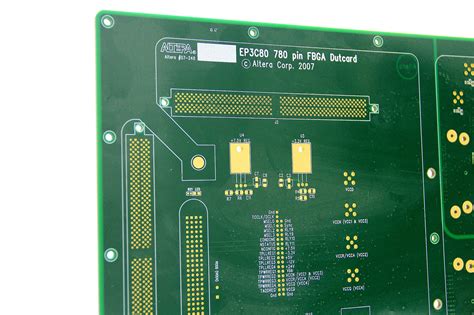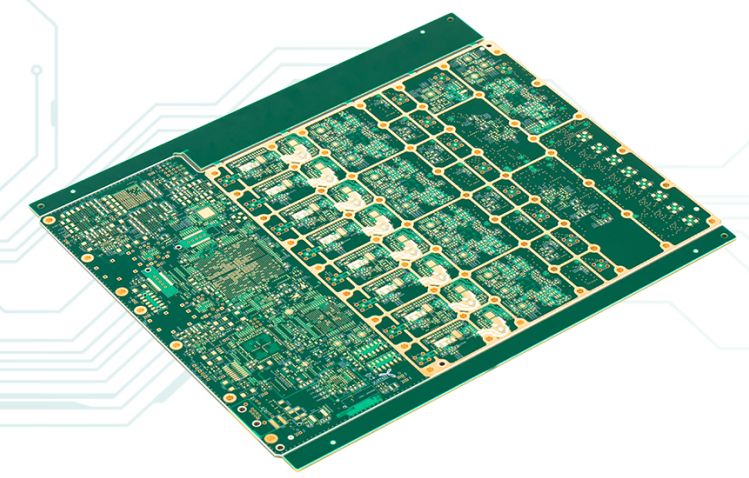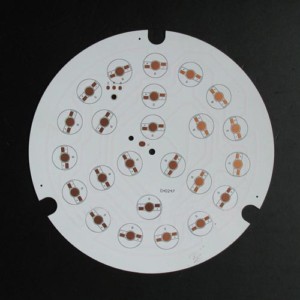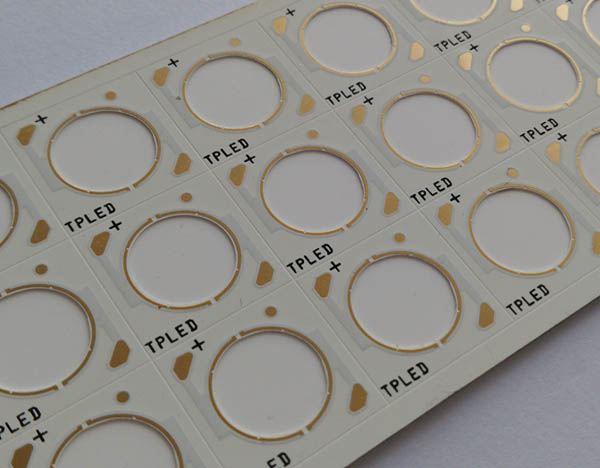Diy ceramic pcb
Step-by-Step Guide to Creating Your Own DIY Ceramic PCB
Creating your own DIY ceramic PCB can be a rewarding and cost-effective way to develop custom electronic circuits. Ceramic PCBs are known for their excellent thermal conductivity, high-frequency performance, and durability, making them ideal for high-power and high-temperature applications. This step-by-step guide will walk you through the process of creating your own ceramic PCB, from selecting materials to final assembly.
To begin with, the first step in creating a ceramic PCB is selecting the appropriate ceramic substrate.
Alumina (Al2O3) is the most commonly used material due to its excellent thermal and electrical properties. Other options include aluminum nitride (AlN) and beryllium oxide (BeO), each offering unique advantages. Once you have chosen the substrate, the next step is to prepare it for the application of the conductive layer. This involves cleaning the surface to remove any contaminants that could interfere with adhesion. Typically, a combination of ultrasonic cleaning and chemical etching is used to achieve a pristine surface.
Following the preparation of the substrate, the next phase involves applying the conductive layer.
This is usually done through a process called screen printing, where a conductive paste, often made of silver or gold, is applied to the ceramic surface through a stencil. The stencil ensures that the conductive material is deposited only in the desired areas, forming the circuit pattern. After the paste is applied, the substrate is subjected to a drying process to remove any solvents, followed by a firing process in a high-temperature furnace. This firing process sinters the conductive particles, creating a solid and durable conductive layer.
Once the conductive layer is in place, the next step is to apply any necessary dielectric layers.
These layers are used to insulate different conductive traces from each other and can be applied using similar screen-printing techniques. After applying the dielectric material, it is also subjected to a drying and firing process to ensure proper adhesion and performance. This step may be repeated multiple times, depending on the complexity of the circuit design.
After the dielectric layers are in place, the next phase involves drilling any necessary holes for vias or through-hole components. This is typically done using a laser or mechanical drilling process, depending on the precision required. Once the holes are drilled, they are often metallized to ensure proper electrical connectivity between different layers of the PCB. This metallization process involves depositing a thin layer of conductive material, such as copper, onto the walls of the drilled holes.
Following the drilling and metallization process, the final step is to apply a protective coating to the PCB.
This coating, often referred to as a solder mask, helps protect the conductive traces from oxidation and mechanical damage. It also helps prevent solder bridges during the assembly process. The solder mask is typically applied using a screen-printing process, followed by a curing step to ensure proper adhesion and durability.
In conclusion, creating your own DIY ceramic PCB involves several meticulous steps, from selecting the appropriate substrate to applying conductive and dielectric layers, drilling holes, and applying a protective coating. Each step requires careful attention to detail and precision to ensure the final product meets the desired specifications. By following this step-by-step guide, you can create high-quality ceramic PCBs tailored to your specific needs, offering excellent performance and reliability for your electronic projects.
Essential Tools and Materials for DIY Ceramic PCB Projects
Creating a DIY ceramic PCB (Printed Circuit Board) requires a meticulous approach and a set of specialized tools and materials. The process begins with understanding the essential components that will facilitate the successful fabrication of a ceramic PCB. Ceramic PCBs are known for their excellent thermal conductivity, high-frequency performance, and durability, making them ideal for high-power and high-frequency applications. To embark on this project, one must first gather the necessary tools and materials, ensuring that each item is of high quality to achieve the best results.
To start, a ceramic substrate is the foundation of the PCB.
Alumina (Al2O3) is the most commonly used ceramic material due to its excellent electrical insulation properties and thermal conductivity. It is crucial to select a substrate with the appropriate thickness and dimensions for your specific application. Alongside the substrate, a high-precision laser cutter or a CNC machine is indispensable for accurately shaping and drilling the ceramic material. These machines allow for precise cuts and holes, which are essential for the proper placement of components and the overall functionality of the PCB.
Next, a metal deposition process is required to create the conductive pathways on the ceramic substrate. This can be achieved through screen printing or thin-film deposition techniques. Screen printing involves using a stencil to apply a conductive paste, typically made of silver or gold, onto the substrate. This method is cost-effective and suitable for larger production runs. On the other hand, thin-film deposition, such as sputtering or evaporation, provides a more precise and uniform conductive layer, making it ideal for high-frequency applications. Both methods require a curing process, often involving high-temperature sintering, to ensure the conductive material adheres properly to the ceramic substrate.
In addition to the substrate and conductive materials, a variety of other tools are necessary for assembling the PCB. A high-quality soldering station with temperature control is essential for attaching components to the board. Ceramic PCBs often require higher soldering temperatures compared to traditional FR4 boards, so it is important to use soldering equipment that can handle these elevated temperatures. Furthermore, a microscope or magnifying glass is invaluable for inspecting solder joints and ensuring that all connections are secure and free of defects.
Moreover, a multimeter is a critical tool for testing the electrical continuity and functionality of the PCB. This device allows you to verify that all connections are properly made and that there are no short circuits or open circuits. Additionally, an oscilloscope can be useful for more advanced testing, particularly in high-frequency applications, as it enables you to observe the signal integrity and performance of the PCB.
Finally, safety equipment should not be overlooked. Working with ceramic materials and high-temperature processes can pose health risks, so it is important to use protective gear such as gloves, safety glasses, and a dust mask. Proper ventilation is also crucial to avoid inhaling any harmful fumes or dust particles generated during the fabrication process.
In conclusion, embarking on a DIY ceramic PCB project requires a comprehensive understanding of the essential tools and materials involved. From selecting the appropriate ceramic substrate and conductive materials to utilizing precision machinery and testing equipment, each step is critical to achieving a functional and reliable PCB. By carefully assembling these components and adhering to safety protocols, one can successfully create a high-performance ceramic PCB tailored to their specific needs.

Common Mistakes to Avoid When Making DIY Ceramic PCBs
Creating DIY ceramic PCBs can be a rewarding endeavor, offering the opportunity to customize electronic circuits with enhanced thermal and electrical properties. However, the process is fraught with potential pitfalls that can compromise the quality and functionality of the final product. To ensure success, it is crucial to be aware of common mistakes and take steps to avoid them.
One frequent error is the improper selection of ceramic materials. Different ceramics have varying thermal and electrical properties, and choosing the wrong type can lead to suboptimal performance.
For instance, alumina is a popular choice due to its excellent thermal conductivity and electrical insulation, but it may not be suitable for all applications. Therefore, it is essential to thoroughly research and select the appropriate ceramic material based on the specific requirements of your project.
Another common mistake is inadequate surface preparation.
The surface of the ceramic substrate must be meticulously cleaned and free of contaminants to ensure proper adhesion of the conductive traces. Any residual oils, dust, or debris can hinder the adhesion process, leading to poor electrical connectivity and potential circuit failure. Utilizing proper cleaning techniques, such as ultrasonic cleaning or plasma treatment, can significantly improve the adhesion quality.
In addition to surface preparation, the application of conductive pastes or inks is a critical step that often goes awry.
Applying too much or too little paste can result in uneven traces, which can cause short circuits or open circuits. It is vital to follow the manufacturer’s guidelines for the correct thickness and application method. Using a stencil or screen-printing technique can help achieve consistent and precise application of the conductive material.
Furthermore, the firing process is another area where mistakes are commonly made.
Firing the ceramic PCB at incorrect temperatures or for inappropriate durations can lead to incomplete sintering or thermal damage to the substrate. It is imperative to adhere to the recommended firing profile, which includes specific temperature ramps, dwell times, and cooling rates. Deviating from these parameters can compromise the mechanical and electrical integrity of the PCB.
Moreover, neglecting to account for thermal expansion can lead to significant issues.
Ceramics and metals have different coefficients of thermal expansion, and failure to consider this can result in mechanical stress and potential cracking of the PCB. Designing the PCB layout with appropriate thermal reliefs and using compatible materials can mitigate these risks.
Another pitfall to avoid is inadequate testing and inspection.
Skipping thorough testing can result in undetected defects that may cause failures in the field. Implementing rigorous inspection protocols, such as visual inspection, electrical testing, and thermal cycling, can help identify and rectify issues before the PCB is put into service.
Lastly, overlooking the importance of proper documentation and record-keeping can lead to repeated mistakes and difficulty in troubleshooting.
Maintaining detailed records of materials used, process parameters, and test results can provide valuable insights for future projects and help in identifying the root cause of any issues that arise.
In conclusion, while making DIY ceramic PCBs can be a complex and challenging process, being aware of and avoiding common mistakes can significantly enhance the chances of success. By carefully selecting materials, ensuring proper surface preparation, applying conductive pastes accurately, adhering to firing profiles, accounting for thermal expansion, conducting thorough testing, and maintaining detailed documentation, one can achieve high-quality ceramic PCBs that meet the desired performance criteria.

Advanced Techniques for Customizing DIY Ceramic PCBs
Creating custom ceramic PCBs (Printed Circuit Boards) is an advanced technique that offers numerous benefits, including superior thermal management, enhanced durability, and improved electrical performance. For those who are well-versed in DIY electronics, delving into the realm of ceramic PCBs can be both a challenging and rewarding endeavor. This article will explore some advanced techniques for customizing DIY ceramic PCBs, providing insights into the materials, processes, and tools required to achieve professional-grade results.
To begin with, it is essential to understand the unique properties of ceramic materials that make them suitable for PCB applications. Ceramics, such as alumina (Al2O3) and aluminum nitride (AlN), are known for their excellent thermal conductivity, high dielectric strength, and resistance to chemical and environmental degradation. These characteristics make ceramic PCBs ideal for high-power and high-frequency applications, where traditional FR4 boards may fall short. However, working with ceramics requires specialized knowledge and equipment, as the material is brittle and can be challenging to process.
One of the first steps in customizing a ceramic PCB is selecting the appropriate substrate material.
Alumina is the most commonly used ceramic substrate due to its cost-effectiveness and good overall performance. However, for applications requiring higher thermal conductivity, aluminum nitride may be a better choice, albeit at a higher cost. Once the substrate material is selected, the next step involves designing the PCB layout. Advanced software tools, such as Altium Designer or Eagle, can be used to create intricate circuit designs that take full advantage of the ceramic material’s properties.
After finalizing the design, the next phase involves transferring the circuit pattern onto the ceramic substrate.
This can be achieved through various methods, including screen printing, photolithography, or laser direct imaging. Screen printing is a cost-effective method suitable for simple designs, where a conductive paste, typically silver or gold, is applied through a stencil onto the ceramic surface. Photolithography, on the other hand, offers higher precision and is ideal for complex designs. This process involves coating the ceramic substrate with a photosensitive material, exposing it to UV light through a mask, and then developing the pattern using chemical etching. Laser direct imaging is another advanced technique that provides high resolution and flexibility, allowing for rapid prototyping and customization.
Once the circuit pattern is transferred onto the ceramic substrate, the next step is to fire the board in a high-temperature furnace.
This process, known as sintering, fuses the conductive material to the ceramic substrate, creating a robust and durable bond. The sintering temperature and duration depend on the specific materials used and must be carefully controlled to avoid damaging the ceramic substrate.
Following the sintering process, additional customization techniques can be employed to enhance the functionality and performance of the ceramic PCB. For instance, vias can be created to establish electrical connections between different layers of the board. This can be achieved through laser drilling or mechanical drilling, followed by filling the vias with a conductive material. Surface finishing techniques, such as electroless nickel immersion gold (ENIG) or silver plating, can also be applied to improve solderability and protect the conductive traces from oxidation.
In conclusion, customizing DIY ceramic PCBs involves a series of advanced techniques that require specialized knowledge and equipment. By carefully selecting the substrate material, designing the circuit layout, transferring the pattern, and employing additional customization methods, it is possible to create high-performance ceramic PCBs that meet the demands of modern electronic applications. While the process may be challenging, the benefits of superior thermal management, durability, and electrical performance make it a worthwhile endeavor for experienced DIY enthusiasts.





